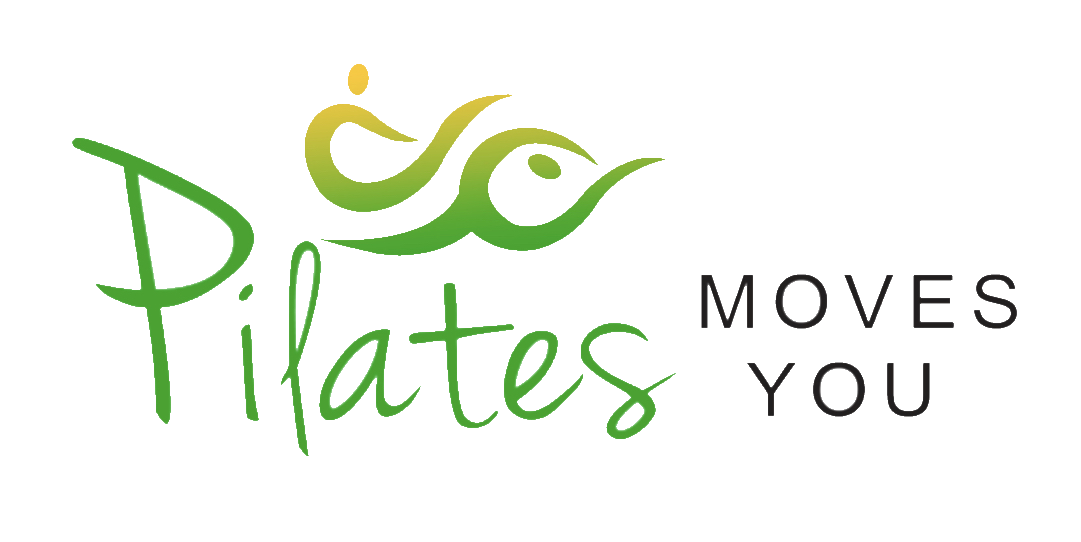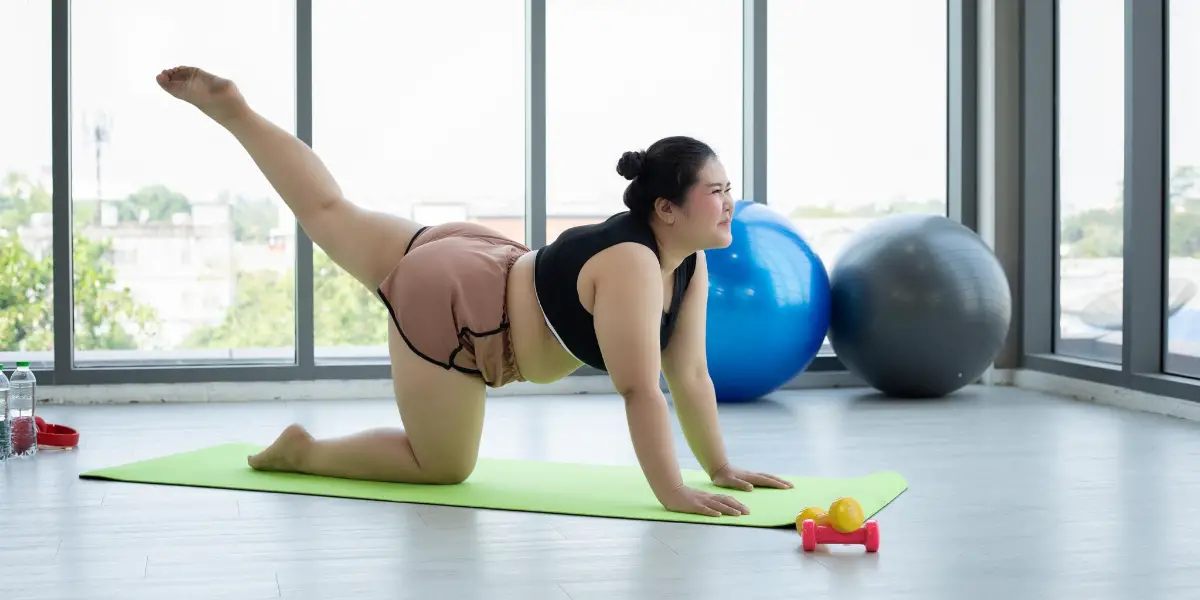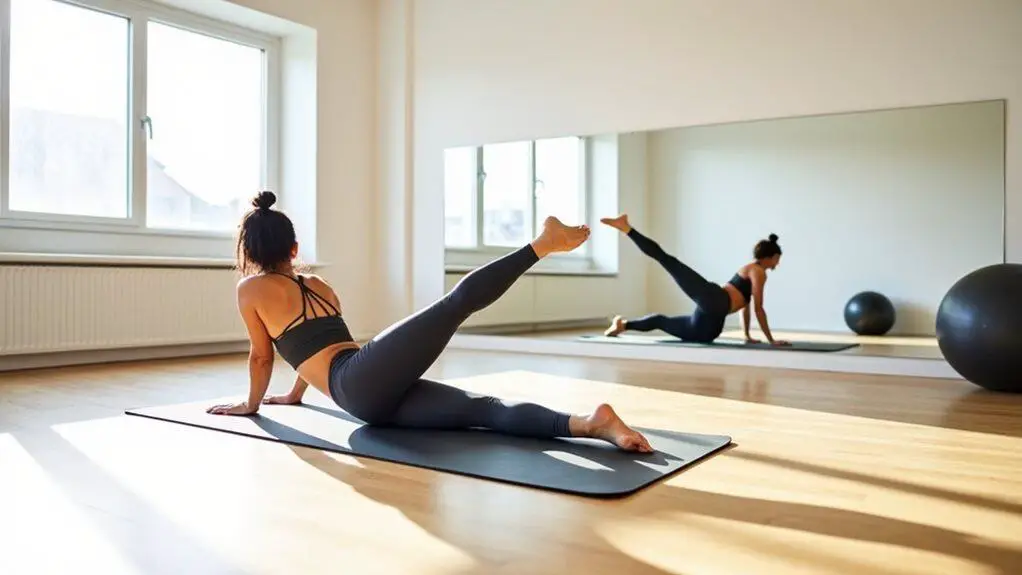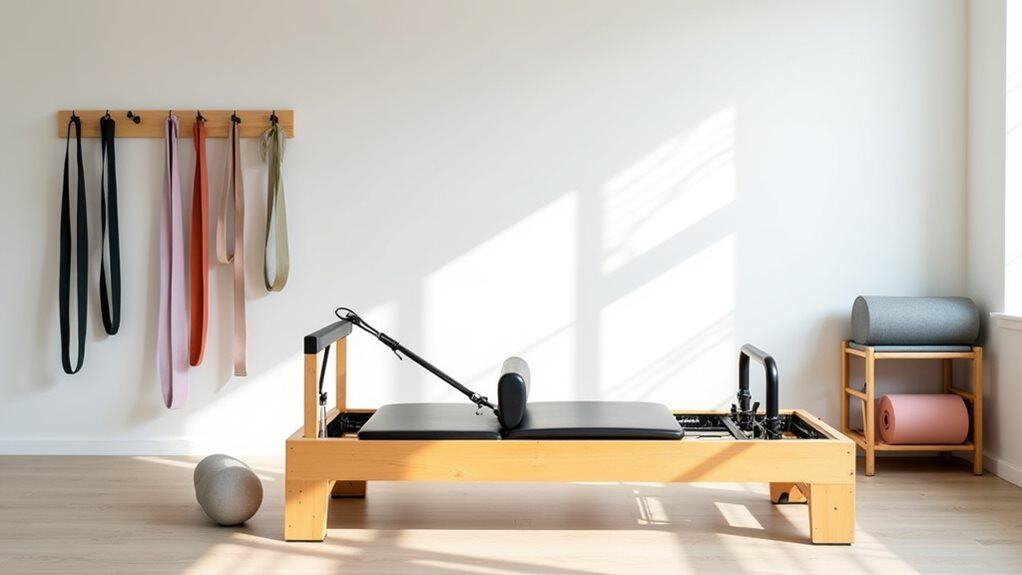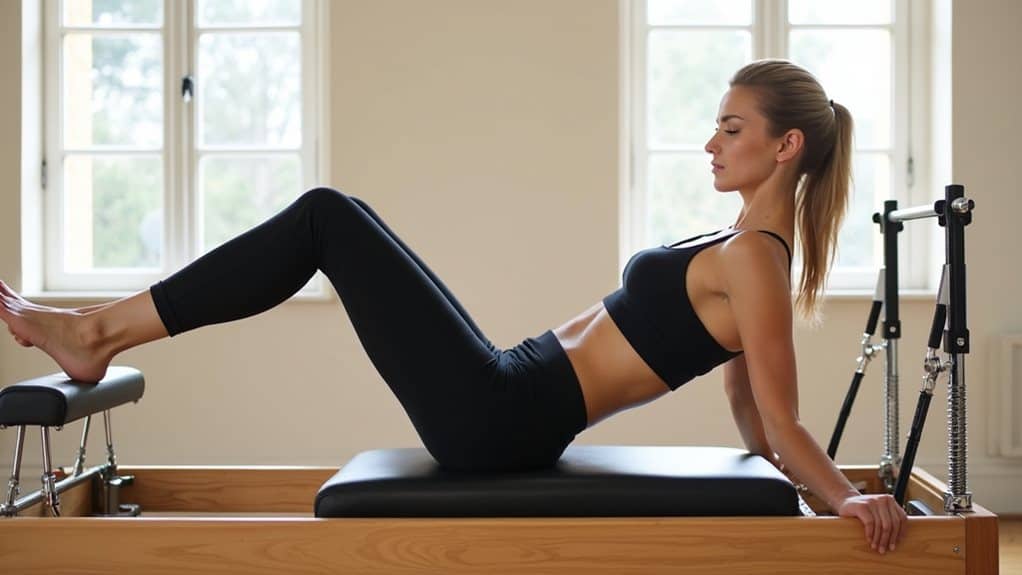Not every workout type is great for people who are just starting on their fitness journey and need to develop their overall strength, stamina, mobility, confidence and mind-body connection. If you’re considering taking up a new physical activity you’ve likely asked ‘can I do Pilates if I’m overweight?’
Pilates is suitable for people of all fitness types and body shapes and fits perfectly for anyone who feels they are unfit, overweight or are just wondering where to start. If you are overweight, Pilates will help you convert your excess fat into lean, toned, muscle.
It’s a great way to start your journey into a healthier lifestyle as it guides you into healthy practices, a positive approach to working out, improved mental health and a desire to explore the world of fitness.
The essential Pilates guide for overweight people is the definitive answer to those seeking a healthier lifestyle without the risk of injuring themselves. Learn the best tips and motivations by reading the article below on Pilates for overweight people.
Why Pilates Is Great For Overweight People
Pilates was originally created to help athletes and dancers returning from injuries. It helped them safely transition back into exercise to restore flexibility strength and fitness.
When the public started to become interested in Pilates it became obvious that there were benefits everyone could enjoy by regularly participating in Pilates.
For plus-sized people who are looking to get into exercising for the first time in their life or those who have taken a long break from exercise and want to return without injuring themselves, Pilates is a great place to start.
In Pilates, you’ll never push your muscles to exhaustion that isn’t the nature of this fabulous discipline.
You’ll be focusing on low repetitions of each exercise 5-12 with intense concentration on your bodies movement, breathe and placement.
Through Pilates you will build core strength, which for many is the goal. However, when we talk about true core strength we are not just talking about our abdominal muscles we are referring to your ‘Powerhouse’, and what you might ask is that?
The ‘Powerhouse’ does include the abdominal muscles but also the lower back muscles, pelvic floor muscles and gluteus. We want all these muscles working together to form a supportive corset for your trunk. When they work in unison they stabilise the body allowing us to move with control, strength, power and balance.
Through Pilates you can built strength and control in your Powerhouse and body to move onto more intense workouts safely and with confidence.
Health Benefits Of Pilates
There are several health benefits from doing this type of work for bodies of all shapes and sizes that include:
- Improved flexibility in joints and muscles
- All core muscle groups will be strengthened and toned, including abs, glutes, hips, and lower back
- Even muscle building for both sides of your body
- Better control over the back and limb muscle groups
- Spine stabilization
- Better overall posture
- Injury prevention and rehabilitation of previous injuries
- Balance will be improved and coordination
- Shoulders, neck, and upper back will have decreased tension
- Prevention of musculoskeletal injuries
- Increased lung capacity and better breath circulation
- Improved concentration
- Increased body awareness
- Increased relaxation and stress management
These health benefits associated with Pilates have both short-term and long-term effects on your body.
You may notice a change in your posture and a reduction in the tightness that you might experience when you wake up in the morning or stand up after a long sitting period.
Your ability to recover after becoming off-balance or tripping while walking will improve and help prevent serious injuries.
Mental Benefits Of Pilates
Sticking to a consistent practice of Pilates can have a significant impact on your overall mental attitude and fortitude as well.
Confidence in your ability and capacity to function in everyday tasks will start to improve, and you will find yourself taking on responsibilities you previously avoided.
Pilates can be a great door opener to more exercises and outdoor activities that were too overwhelming to start or try before you started your practice.
This can lead to more socialising with others, more new opportunities to try.
Modifying Different Pilates Poses
Whether you choose to perform pilates in the comfort of your own home or with an instructor in a studio with others around you, it’s essential to know how to modify the exercises to fit your needs.
Not everyone is going to be able to pull off the picture-perfect poses when they first start but not every video or instructor is going to take the time to let you know how to modify the poses either.
Follow these general guidelines when attending your next Pilates class to prevent any possible injuries from occurring, and you’ll be started on the right path.
Modifying Ground Poses
Many of the poses in Pilates involve groundwork where you will lay on your mat and perform various movements.
There will be times when you’ll have to stand up from these mat exercises. Initially you might want to consider how you support making these transitions from the mat to standing and visa versa to avoid injury.
The key to getting up from the ground without risking an injury is to have something stable nearby you can use as leverage so that you don’t have to put all the weight onto your own body.
A chair can work perfectly as long as it’s stable and doesn’t have any chance of tilting over.
You can use the safe method of getting up or laying down using a chair if you feel comfortable and capable enough to do this throughout the workout.
But if you’re unsure if this is going to be practical for your Pilates workout, then you can simply modify your ground poses to become chair poses.
There are a number of chair based Pilates workouts for beginners available on YouTube such as this one.
If you are able to transition safely from standing to being down on your mat, you can then think of ways to modify comfort levels while lying on your back.
If your neck is overextended when it reaches the floor, you can put a pillow or a couple of workout blocks underneath for better stability, bringing your neck in line with your spine as we want to focus on achieving and maintaining neutral spine.
You can use these blocks or pillow under the head if you’re on your lying on your back, stomach or either side of your body.
Modifying Balance Poses
When plus-sized people are just starting out, their balance might be an issue when standing and needing to put all weight on one leg.
You’ll want to be near a wall or stabilising pole you can hold onto while balancing to prevent falling over and risking injury.
Even when you have both feet on the ground, you should be using a wider base instead of the recommended hip-width apart stance most instructors will use.
Move your feet more shoulder-width or slightly wider so that you feel stable when twisting and turning.
Modifying Squats
Some poses people without excess weight can pull off just don’t have the same benefit when you’re restricted in motion.
Leg bends or squats can be one of those poses that overweight people struggle to get through because their range of motion is limited.
Instead of going in a straight line when doing a leg bend, try altering the movement to an angle 20-30 degrees. Have your heels turned in and toes turned out, legs shoulder width apart or wider, then as you flex at the hips and knees, lowering into a squat think of your knees going wide in line with your second and third toe.
This should provide the opportunity for a greater range of movement in the hip, knee and ankle joints
Hire A Private Trainer
When you’re starting to get back into exercising and you’re afraid you might gain an injury or put yourself in a situation that could be potentially dangerous i.e. when you are lifting weights, it’s a good idea to hire a personal trainer.
A personal trainer can give you and your situation the care and attention it needs. They will help you be mindful of how to transition into concentrated movement.
Having one-on-one attention will be more helpful to learn how to continue to modify the poses and positions that will fit your body’s needs without risking injury.
When jumping into classes, whether online or in-person, you can get caught up in competing with others, or the classes can move at a much faster pace than you are used to or ready for.
A private trainer will closely monitor your situation to know how much is too much or if you should be challenging yourself to do more.
The prices for Pilate personal trainer can vary depending on a number of different factors:
- Experience of instructor
- Amount of time for each class
- Type of studio the class is held in
- Whether it is at-home or in-studio classes
- If you pay in cash or with card
- If you pay for several classes upfront or individually
Having some money invested into your health can be more motivating to be consistent with your practice.
Otherwise, you might find it hard to continue waking up and doing the work week after week.
Feeling Comfortable in a Studio
Not every person or personality is going to be the right fit for every studio out there or rather not every studio is going to be the right fit for you.
Some studios will attract certain body types or appeal to exercisers at different points in their journey.
Getting a gym membership to Gold’s Gym is going to have a different atmosphere than Planet Fitness.
Luckily, you have options to vet your different gyms and studios to find the one that will make you comfortable.
If you don’t like the studio or gym you visit, then it’s going to be hard to make Pilates a consistent practice. If we feel comfortable in our surroundings we will feel more confident, less distracted by negative thoughts and able to focus on our goals.
Call Ahead of Time
If you wait till you show up at the gym or studio, you could run the risk of being influenced by the salespeople who work there.
Instead of being persuaded into the wrong situation, give the place a call ahead of time and talk to the employees there.
If you can talk to the front desk attendant instead of a salesperson it will be to your benefit.
Employees who are not hired for sales will give you more honest answers about the types of people who work out there and the general atmosphere.
Try to call at different times of the day and with various employees to get a better idea of what you should expect.
Check the Reviews
Taking time to looking through reviews will give you the answers you need from the people who actually go to the gym.
There will be no biased information, and you’ll be able to get insights into questions you didn’t even think of.
Check for statements about people feeling shamed or unwanted. You can also typically find comments about the people who frequently visit the gym or studio.
Use these comments to formulate some better questions to ask the actual gym or studio that you end up visiting.
Visit the Gym or Studio
After you’ve checked all the online reviews then you should make sure to plan an in-person visit before signing up for a membership.
Go in with specific questions you’d like to ask ready so that you won’t be put on the spot or forget something you wish you could have asked.
Ask for a tour through the facility so that you can see all the different areas. Enquire at the gym or studio about its busier times of the day and then you can decide if you’d rather attend when there aren’t as many people using the equipment or filling up the classes.
Home Equipment Vs. Studio Equipment
If you plan to do all of your Pilates exercises at home, you will need to make extra considerations on the equipment you purchase.
Not all the equipment is going to be ideal because of the materials being used and the quality of the build.
Any Pilates equipment that is made of heavy-duty wood, metal, or leather straps should be perfect for plus-sized people starting
Staying away from plastic materials is best, and any inexpensive springs or straps will help you avoid serious injury from a poorly built piece of equipment.
Any studio or gym should have invested in high-quality equipment, but you’ll want to check before you start using or sign up for a membership.
You could even ask your instructor ahead of time if they have the equipment you are used to using.
The instructor should be able to offer any alternative poses or equipment you can use if you don’t feel they are suitable.
How to Avoid Injuries
It’s hard enough to find the motivation to begin exercising so when you have taken that positive determined step into the Pilates world you will want to avoid sustaining an injury.
Respect Your Body’s Boundaries
Especially if you are just starting out, you aren’t going to reach the same picturesque poses as someone who has been doing Pilates for years.
That’s why you need to understand where you are in your journey and be respectful of your body’s boundaries.
Start off with a small range of motion, so you don’t overdo it and look for the small wins.
If you feel tightness? Soreness in your muscles the days following the class then the exercises are working, and you don’t need to push farther.
Feel proud of the actions you took to get to class.
The more classes you attend, the more you will notice your flexibility and strength improving, accept that progress is meant to be gradual you don’t need to push your body to its absolute limits.
Personal trainers will be able to recognise these limitations and remind you of taking it at a pace that’s right for you. Remember we are looking to find that delicate balance of enjoyment and challenge. If you are practising in a group try not to get carried away feeling like you have to be doing the same number of repetitions as everyone else is, for all you know they have been doing Pilates for years. If your are practising at home take your time to watch the instructor, listen to the verbal cues and be mindful as you move.
Recognizing Hypermobility for Injury Prevention
What is hyper mobility? Joint hyper mobility means that some or all of our joints have an unusually large range of movement. Hyper mobility can cause pain.
Every person is going to react differently to different poses and stretches.
When certain people extend their limbs completely straight it is actually overextending their joints and causing pain and even potential injury.
These people need to keep their limbs at a slight bend so that they don’t cause this pain when stretching or working out.
By becoming aware of these subtle changes in your body, you can avoid injury while still getting the most out of your workouts.
Warming Up Your Body
Don’t go into a Pilates workout without having done any warming up because without the proper flexibility and blood flow you could risk injury from stiff muscles.
Before jumping on your mat, go through a round of stretches that will help your joints and muscles loosen up so that when you start working out, they are ready for the extensions.
If you can fit in a quick walk or bike ride then this will also help increase blood flow throughout your body and will warm up your muscles and joints to be able to handle more.
Many injuries are caused because the person wasn’t properly warmed up before starting their workout.
This can give you a false sense of security on what you are able to handle.
You might have noticed in the middle of your workout you were able to bend to a certain degree.
When you try that same bend without warming up, there is a high likelihood that your body won’t be able to take the same movement without a warm up and you’ll risk injury.
Recognize When Enough is Enough
Another high cause of injury while working out is people who push their bodies at the end of a workout when they are most vulnerable.
After a workout, your body is drained of its ability to hold as much strength or control.
You could start feeling shaky and tired in different areas of your body making it harder to pull off the same moves or continue moving forward.
If you choose to push your body past these warning signs, you are increasing the chance of serious injury.
Without the complete control you had over certain positions or poses, your body could fall off balance or you could forget to engage certain muscles that will prevent strain on your back or spine.
Pilates and Weight Loss Possibilities
Pilates is an excellent choice for anyone looking to reduce their weight and it should ultimately be paired with great nutrition for the biggest effect.
Pilates in itself isn’t as effective as a weight loss workout than more cardio-focused routines. This is because Pilates doesn’t focus on burning lots of calories but instead strengthening your core and muscles.
It isn’t recommended if you are looking to lose weight fast but also losing weight quickly can come with its own consequences.
With a good nutrition plan in place, you can effectively use the two in combination to start losing weight slowly and efficiently, with the potentially for reducing and maintaining weightless long term.
And the best part about losing weight with Pilates is that it can act as an introduction to harder and more intense workouts.
How? When you are consistent with Pilates, you improve your core strength and flexibility which will allow you to continue to progress without risking serious injury.
Pilates can also improve your energy levels and sense of well-being which symbiotically improve the effectiveness of other workout routines you implement.
Working out consistently with Pilates will lead to more lean muscle mass and increased metabolic rate. This helps you burn more calories even if you’re just sitting down on your couch in a rest state.
Although Pilates can help you lose weight, it is more of a precursor to being able to do the exercises that will help you lose weight quickly.
I know from personnel experience and through speaking to clients that the feel good factor gained from exercise can work as an incentive to make better foods choices. When we feel better about ourselves we have more of an incentive to look after ourselves and part of the way we do that is to nourish our bodies and making healthy food choices avoiding sabotaging our hard work.
How to Stay Motivated for Pilates
It’s not going to be easy stay motivated on days that your muscle sore, sleep deprived or if something bad happens in your personal life.
But as long as you use the tips below, you will find a way to keep going and get to your ultimate goals.
Set Specific Goals And Track Progress
When setting your goals, it’s best to use the S.M.A.R.T. method.
- Specific
- Measurable
- Attainable
- Realistic
- Time-Bound
These elements will help you set goals that are within reach and will keep you pushing forward without feeling like you aren’t making any progress.
But it’s also important that you find ways to track your progress every day and look back at these notes every week.
You could set up a simple spreadsheet to input the amount of time you worked out and keep track of the days you are working out or make use of our How to Track Pilates Progress guide and workbook.
It will also be helpful to note down any reasons why a workout didn’t happen or how you were feeling before, during, or after your workout.
This will provide valuable insights into familiar problems you are having in your routine and find solutions to get past them.
Treat Yourself to Rewards
Make a list of rewards you can use after every workout or every week that will help you celebrate your wins.
Without celebrating your wins for the week or for the day, you will find it much harder to find the motivation to continue working hard.
But if you know that at the end of the week you’re going to rent a new movie that came out or buy a new sweater, when you meet your goals, then it will incentivise you to work even harder for your goals.
We all need to be careful about using food as a reward because you don’t want to position food as the only thing that makes you happy.
Try to find other things in your life you enjoy, make a list and use those as rewards when the time comes.
Focus on how exercise makes you feel. How do you feel before a workout , during and most importantly after a workout. Take the positives from this and appreciate that those positive feelings are a reward in themselves. When we exercise our body releases Endorphins which primarily help us deal with stress and reduce feelings of pain. These so called ‘happy hormones’ can produce a feeling of euphoria, now there is no disputing what a wonderful reward that can be !!
Set Up Additional Support Systems
Start to talk to the people you are close with and let them know what you are trying to do.
If you feel comfortable enough, ask a couple of them to check in on you throughout the weeks to see how your workouts are going.
To some, this may feel uncomfortable because it is forcing you to be accountable for your actions and goals.
By letting someone else check in on your progress, it makes the consequences real that if you don’t work out, you will have to explain to someone why you didn’t.
The potential embarrassment from this experience can cause you to become and remain motivated enough to remain consistent with your practices.
Make sure you have rewards set up as well because you don’t want to be in a situation where your only motivation is fear and embarrassment.
If you don’t feel comfortable asking some friends, you could find someone in class that you feel you have a connection with or chat to the instructor and start an accountability practice with that person.
Hangout with Others Trying to Lose Weight
You’ve probably heard it before, but you are the sum of the people around you.
The more you surround yourself with people who have similar goals to you and who are on a similar journey, the easier it will be to stay motivated to reach your goals.
Whether some people are further along in their journey or others are a little behind, both will help you to realise that you are on a journey to better health.
When we choose to exercise in a group we are aiming to be the best version of ourselves. Others are not our competition, each person is on their own journey, with different life experience, goals and motivation.
Choose who you share your goals with, not everyone will understand them or your motivation. Share with those who will celebrate your successes and support your struggles.
Every person is going to have their own reasons for taking up Pilates and as long as you can surround yourself with as many people on the journey as possible you are increasing your chances of success.
Summary
Pilates can be a great start for overweight people looking to get in better shape, mentally and physically. The right exercises will help you build your core strength and increase your flexibility, leading to better posture and energy levels. Listen to your body when you begin anything new, aim to strike an equal balance of challenge and enjoyment. Get ready to feel energised and more confident in your bodies ability.
